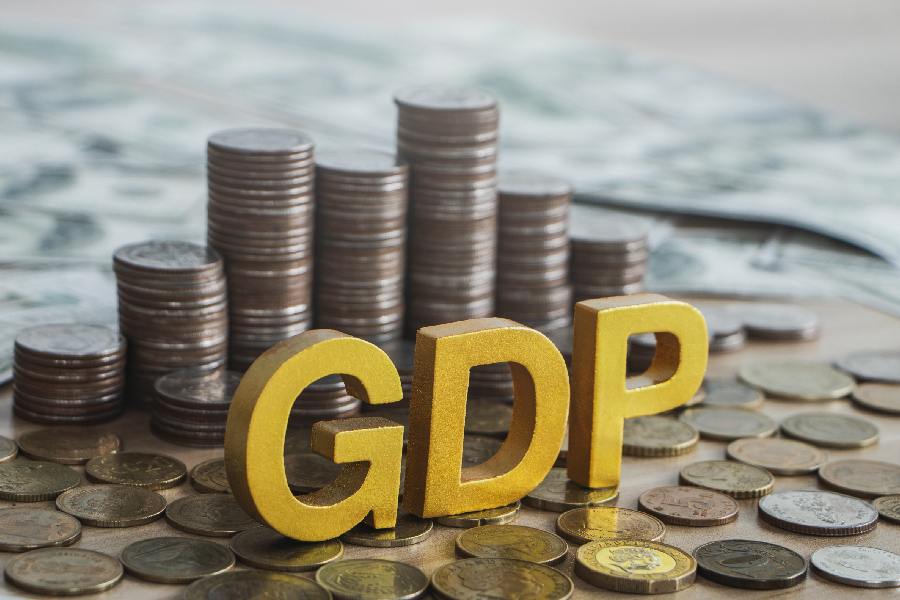Climate change under a high-end emissions scenario could lead to a 16.9 per cent loss in GDP by 2070 across the Asia and Pacific region, with India projected to suffer a 24.7 per cent GDP loss, according to a new report.
Rising sea levels and decreasing labour productivity would drive the most significant losses, with lower-income and fragile economies being hit the hardest, it said. The new research, presented in the inaugural issue of ADB’s "Asia-Pacific Climate Report", details a series of damaging impacts threatening the region.
It says that if the climate crisis continues to accelerate, up to 300 million people in the region could be at risk from coastal inundation, and trillions of dollars’ worth of coastal assets could face annual damage by 2070.
“Climate change has supercharged the devastation from tropical storms, heat waves, and floods in the region, contributing to unprecedented economic challenges and human suffering,” said ADB President Masatsugu Asakawa.
Urgent, well-coordinated climate action addressing these impacts is necessary before it is too late, he said.
This climate report provides insights into financing urgent adaptation needs and offers promising policy recommendations to governments in our developing member countries on how to reduce greenhouse gas emissions at the lowest cost, he added.
“By 2070, climate change under a high-end emissions scenario could cause a total loss of 16.9 per cent of GDP across the Asia and Pacific region. Most of the region would face more than 20 percent loss.
"Among the assessed countries and subregions, these losses are concentrated in Bangladesh (30.5 percent), Viet Nam (per cent), Indonesia (per cent), India (24.7 percent), ‘the rest of Southeast Asia’ (23.4 per cent), higher-income Southeast Asia (22 per cent), Pakistan (21.1 per cent), the Pacific (18.6 per cent), and the Philippines (18.1 per cent),” the report said.
It said that developing Asia has accounted for most of the increase in global GHG emissions since 2000. While advanced economies were major GHG emitters throughout the 20th century, emissions from developing Asia have risen more rapidly than those from any other region in the first two decades of the 21st century.
“Consequently, the region’s share of global emissions rose from 29.4 per cent in 2000 to 45.9 per cent in 2021... Emissions from developing Asia continue to rise, driven primarily by China, which contributed about 30 per cent of global emissions in 2021,” the ADB report said.
The report pointed out that the region is home to 60 per cent of the world’s population, with per capita emissions still below the global average.
Intensified and more variable rainfall, along with increasingly extreme storms, will lead to more frequent landslides and floods in the region, it said.
“This will be most pronounced in mountainous and steeply sloped areas, such as the border area of India and China, where landslides may increase by 30 per cent - 70 per cent under 4.7 degrees Celsius of mean global warming. These outcomes will be further worsened by reductions in slope-stabilizing forest cover, as forests unable to cope with new climate regimes suffer dieback,” the report said.
Leading models indicate that trillions of dollars in annual capital damage from riverine flooding could occur in Asia and the Pacific by 2070. Expected annual damage, in line with economic growth, may reach USD 1.3 trillion per year by 2070, affecting over 110 million people annually.
"India is reported to have the highest number of affected individuals and damage costs, with residential losses being predominant," the report said.
The GDP loss in 2070 from reduced labour productivity is estimated to be 4.9 per cent for the region, with tropical and subtropical locations being the most impacted. These include “the rest of Southeast Asia” (11.9 per cent), India (11.6 per cent), Pakistan (10.4 per cent), and Vietnam (8.5 per cent).
Due to increased riverine flooding under a high-end emissions climate scenario, the GDP loss in 2070 for Asia and the Pacific is projected to be 2.2 percent.
Countries with mega-deltas experience the most substantial losses, with Bangladesh, “the rest of Southeast Asia", and Vietnam facing GDP reductions of 8.2 per cent, 6.6 per cent, and 6.5 per cent, respectively. Indonesia and India each face around a 4 per cent GDP loss, the report said.
Except for the headline, this story has not been edited by The Telegraph Online staff and has been published from a syndicated feed.











